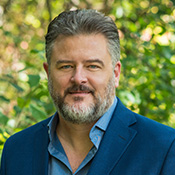Technologies
Immune Classification of HPV-associated Head and Neck Cancer
Tech ID: L-21-011
Background
HPV-driven (HPV+) head and neck squamous cell carcinoma (HNSCC) is the fastest rising cancer in North America. While cure rates can be high, around 20% of patients recur after primary treatment. Current multimodal treatment regimens are historically derived from clinical trials for the more aggressive HPV-negative HNSCC and may be more intensive than necessary for most HPV+ HNSCC patients.
Thus, there is significant interest in treatment de-intensification for HPV+ HNSCC. However, early phase III randomized clinical trials attempting treatment de-escalation through substitution of chemotherapy with cetuximab led to inferior outcomes (Gillison ML et al, Lancet 2019; Mehanna H et al, Lancet 2019). As a result of these landmark studies, recent treatment de-intensification guidelines from ASCO (Adelstein DJ et al., JCO 2019) and the Head and Neck Cancer International Group (Mehanna H et al., JCO 2020) have both called for de-intensification to only be attempted in the context of a clinical trial for patients with favorable risks, and that patient selection will be key in future de-escalation studies. Furthermore, phase III intensification clinical trials testing current immunotherapy plus standard of care for newly diagnosed HNSCC patients with poor prognosis has also been futile thus far (Lee NY et al. Lancet Oncol 2021), leading some to argue that patient selection is key in future trials (Bonomo P et al. Lancet Oncol 2021). Thus, identification of the ideal population of patients for treatment de-escalation or intensification remains an important and highly controversial topic of immediate relevance.
Technology Overview
Our researchers have created a prognostic score (UWO3) which classifies patients into three immune classes (immune rich, mixed, or immune desert) and was strongly associated with disease-free survival in six independent cohorts comprising 906 patients, including large retrospective and prospective datasets. Pooled analysis demonstrated that the immune rich group had superior disease-free survival at 5 years to the immune desert and mixed groups after adjusting for age, sex, smoking status, and AJCC8 clinical stage. The UWO3 score was able to identify patients from two treatment de-escalation cohorts who remain disease-free after aggressive de-escalation to 30 Gy radiation.
The UWO3 immune score could enable biomarker-driven clinical decision-making for patients with HPV+ HNSCC based on robust outcome prediction across six independent cohorts. The superior survival of immune rich patients supports de-intensification strategies, while the inferior outcomes of the immune desert patients suggest the potential for intensification and/or immunotherapy. Prospective de-escalation and intensification clinical trials are currently being planned.
Benefits/Applications
The three-gene immune score (UWO3) is highly validated and provides a novel prognostic tool to risk stratify HPV patients and has the potential to dramatically impact care through biomarker-driven de-intensification and intensification.
Keywords: prognostic tool, HPV-associated HNSCC, head and neck squamous cell carcinoma, immune score, biomarkers, clinical decision-making, treatment planning
Patent Status: US provisional application filed
Request More Info
For Industry
We work with a wide range of industry verticals to help overcome their technical challenges and/or open new and exciting market opportunities. Our team is dedicated to helping both industry and the inventor(s) find the solution that could make a difference to a company and a community.
To learn more, click here.


